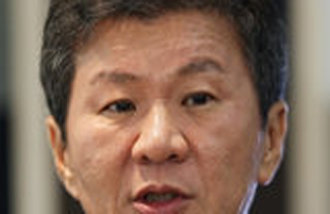The timing of vengeance
King Fuchai of the Chinese state of Wu, who lost his father to King Goujian of Yue in the Spring and Autumn Period of China, slept on piles of firewood to remember his fathers death. This is an act of biting the bullet. Fuchai told people who entered his room to shout Dont forget Goujian, who killed your father, and added, I`ll get revenge without fail. Learning of this, Goujian preemptively attacked but lost to Fuchai, who had meticulously prepared for vengeance. Goujian became a servant to Fuchai, returned to Wu, and pledged vengeance by frequently tasting the bitter flavor of hanged gallbladder. In the end, Goujian forced Fuchai to surrender after patiently waiting 18 years after his loss.
Former U.S. Defense Secretary Donald Rumsfeld laid a night satellite image of the Korean Peninsula on the desk at his office. This picture showed starkly contrasting images of the bright South and dark North of the peninsula, illustrating how significantly a single people in two countries can become different depending on ideology and political systems. Rumsfeld would say, Looking at this picture every day, I think of the Korean Peninsula issue. Peter Pace, former chairman of the U.S. Joint Chiefs of Staff, put a picture of his man who was killed in action in the Vietnam War on his office desk. Pictures placed on and in front of a desk will symbolize ones wish or commitment.
On the wall of South Korean Defense Minister Kim Kwan-jin are photos of North Korean counterpart Kim Yong Chun and Kim Kyok Shik, chief of the Norths 4th Army Corps. To Kim Kwan-jin, who was appointed after the Norths attack on Yeonpyeong Island late last year, Kim Yong Chun is effectively head of the enemy force. Kim Kyok Shik, in charge of the Northern Limit Line in the Yellow Sea, is the very person who spearheaded the North`s attacks on the South Korean naval warship Cheonan and Yeonpyeong. Kim Kwan-jin and Kim Kyok Shik would face off as the chief of the Souths 3rd Army Corps and the Norths 2nd Army Corps, respectively, and then as the chairman of the Souths Joint Chiefs of Staff and the Norths chief of general staff on both sides of the Demilitarized Zone.
Both Koreas have had five skirmishes and battles against each other since 1999. Most of the battles started with a sudden attack by the North on the South, but the South has two wins, one draw and two losses. The North, which lost the first inter-Korean Yellow Sea battle in 1999, got revenge in the second battle in 2002. The North suffered losses at the naval battle of Daecheong Island after crossing the inter-Korean sea border in March 2009. The brutal attack on the Cheonan in March last year can be considered Pyongyang`s vengeance for its loss at the Daecheong battle. It is difficult to determine which side won in the Norths attack on Yeonpyeong in November last year. The photos of Kim Yong Chun and Kim Kyok Shik are hoped to be a pile of firewood and gallbladder through which Defense Minister Kim Kwan-jin can renew his commitment to avenge without fail should North Korea attack again.
Editorial Writer Kwon Sun-taek (maypole@donga.com)






